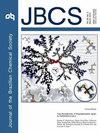丁香酚生物聚合物纳米包膜油桃防治褐腐病的研究
IF 1.3
4区 化学
Q3 CHEMISTRY, MULTIDISCIPLINARY
引用次数: 0
摘要
真菌引起的水果感染除了造成经济损失外,还会降低人类消费食品的数量和质量。因此,本研究旨在探讨壳聚糖和羧甲基纤维素基丁香酚纳米胶囊(NCs)对油桃抗褐腐病的保护作用。从阴离子模板开始,通过一层一层(LbL)的自组装和多达两层聚合物的沉积制备了纳米碳纳米管。水动力直径从158 nm(纳米乳液)、360 nm(一层聚合物)到398 nm(两层聚合物)不等。NCs表示,在体外释放过程中,丁香酚的释放遵循一级过程。除了处于稳定区域(zeta电位约为| ~ 30| mV)外,胶囊与油桃表面具有良好的粘附性。在褐腐病防治方面,与纳米乳液和两层聚合物纳米控制相比,壳聚糖丁香酚纳米控制被证明是最好的配方,增加了果实在7天后没有症状的可能性。因此,本研究表明,含有丁香酚的壳聚糖NCs可以作为水果采收后较长时间保存的替代品。本文章由计算机程序翻译,如有差异,请以英文原文为准。
Nectarine Coated with Biopolymeric Nanocapsules Containing Eugenol to Control Brown Rot
Infections in fruits caused by fungi reduce the quantity and quality of food for human consumption, in addition to causing economic losses. In this sense, this study aimed to address the effects of eugenol nanocapsules (NCs) based on chitosan and carboxymethylcellulose in protecting nectarines against Monilinia fructicola, a brown rot agent, a worldwide important disease. NCs were prepared by layer-by-layer (LbL) self-assembly starting from an anionic template and deposition with up to two polymeric layers. The hydrodynamic diameters ranged from 158 nm (nanoemulsion), 360 nm (one polymeric layer) to 398 nm (two polymeric layers). NCs presented, during the in vitro release, the release of eugenol following a first order process. In addition to being in the region of stability (zeta potential ca. |30| mV), the capsules showed good adhesion to the nectarine surface. In relation to brown rot, the eugenol NCs with chitosan proved to be the best formulation compared to nanoemulsion and NCs with two polymeric layers for its control, increasing the probability that the fruits remain without symptoms, even after 7 days. Therefore, this study demonstrated that chitosan NCs containing eugenol could be an alternative to preserve fruit for longer periods in post-harvest.
求助全文
通过发布文献求助,成功后即可免费获取论文全文。
去求助
来源期刊
CiteScore
2.90
自引率
7.10%
发文量
99
审稿时长
3.4 months
期刊介绍:
The Journal of the Brazilian Chemical Society embraces all aspects of chemistry except education, philosophy and history of chemistry. It is a medium for reporting selected original and significant contributions to new chemical knowledge.

 求助内容:
求助内容: 应助结果提醒方式:
应助结果提醒方式:


